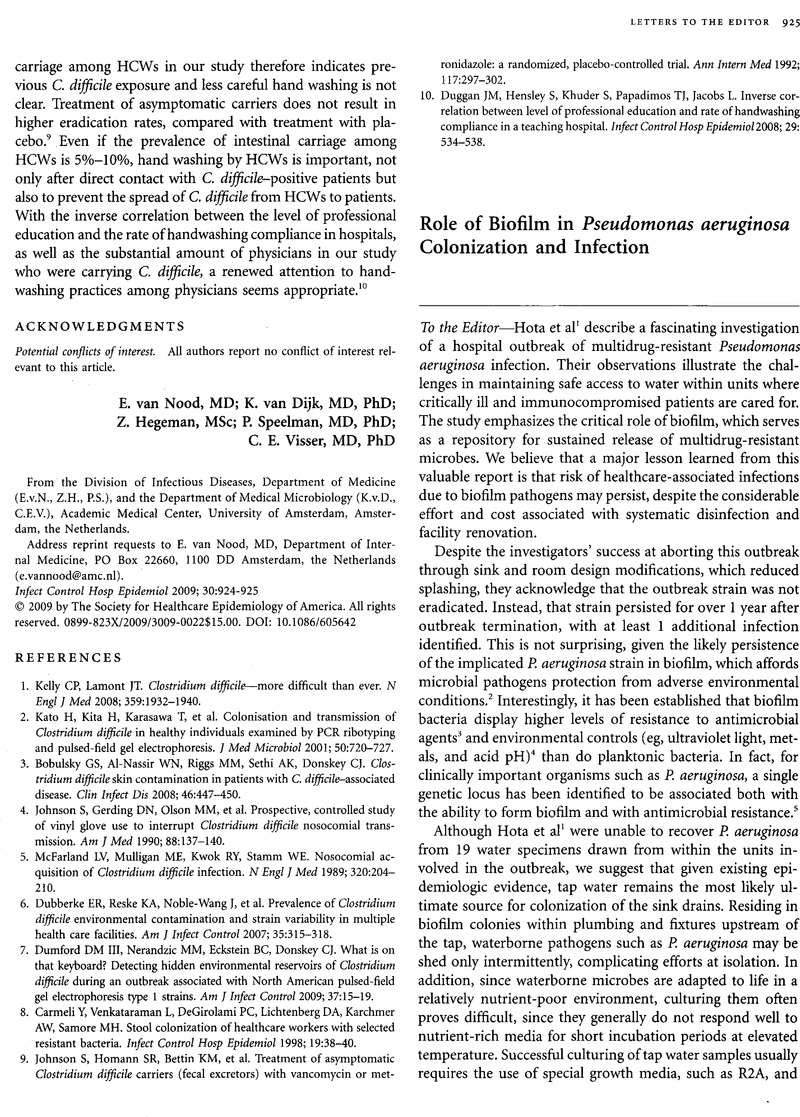Crossref Citations
This article has been cited by the following publications. This list is generated based on data provided by Crossref.
Curran, Evonne T
2012.
Outbreak column 3: outbreaks of Pseudomonas spp from hospital water.
Journal of Infection Prevention,
Vol. 13,
Issue. 4,
p.
125.
Niemirowicz, Katarzyna
Surel, Urszula
Wilczewska, Agnieszka Z
Mystkowska, Joanna
Piktel, Ewelina
Gu, Xiaobo
Namiot, Zbigniew
Kułakowska, Alina
Savage, Paul B
and
Bucki, Robert
2015.
Bactericidal activity and biocompatibility of ceragenin-coated magnetic nanoparticles.
Journal of Nanobiotechnology,
Vol. 13,
Issue. 1,
Abdouchakour, F.
Aujoulat, F.
Licznar-Fajardo, P.
Marchandin, H.
Toubiana, M.
Parer, S.
Lotthé, A.
and
Jumas-Bilak, E.
2018.
Intraclonal variations of resistance and phenotype in Pseudomonas aeruginosa epidemic high-risk clone ST308: A key to success within a hospital?.
International Journal of Medical Microbiology,
Vol. 308,
Issue. 2,
p.
279.
Markiewicz, Karolina H.
Misztalewska-Turkowicz, Iwona
Niemirowicz, Katarzyna
Bucki, Robert
Majcher, Anna M.
and
Wilczewska, Agnieszka Z.
2019.
Carbamohydrazonothioate-based polymer-magnetic nanohybrids: Fabrication, characterization and bactericidal properties.
Arabian Journal of Chemistry,
Vol. 12,
Issue. 8,
p.
5187.





